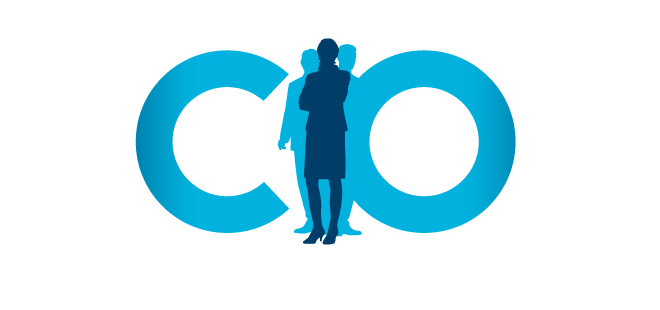SMBs Beware: You Have to Make These Investments
In my consultancies I observe that the tendency to not to spend money is increased as the size of the company gets decreases. I do not blame them, since they are operating with small budgets and margins. However, as the size of the business increases, necessary investments have to be made, which, which otherwise will cause unexpected expenses in the long run. And those expenses almost always tend to be a big chunk to swallow.
First item, as you would expect, is the hardware. Hardware includes both server hardware and the firewall, if you prefer to keep your data center on-premise (although Microsoft and Google has very good cloud offerings, there are cases when you do not want to go to the cloud). When you are investing in your data center, plan minimum 3 years up to 5 years ahead. 3 years may sound a very near future, but it is not, because the hardware maintenance costs will increase dramatically, up to a point which will surpass a brand new purchase. And if you plan for today’s needs, you will be facing an upgrade in the very near future. From the firewall perspective, a hardware firewall will perform much better and much secure than a software firewall – you can consider Checkpoint, Fortinet, Sonicwall, CyberGuard, NetScreen. You cannot let your business to weak software.
Continuing with the infrastructure, you have to invest in the network bandwidth. A DSL/ADSL line is way cheaper than leased lines offering the same speeds, but this is not the point. Not only you will not be receiving the important e-mail, order, information in a timely manner, but also you risk halting your network to a halt. Halting your network may mean halting your voice communications, if you are using some kind of IP telephony – such as Skype, Lync, Hangouts and the like. Invest in what is a little bit more than necessary for your business.
RELATED: Geek Ethicist: Apples and Classes
Than comes the case of the printers. Almost all SMBs I have worked with so far complained me about the printers, and almost all of them used consumer-grade printers. Consumer-grade printers are not designed to handle the business level use and they will somehow break. In addition, you will not be able to keep up with cartridge expenses – whether you buy the original or have third parties fill up your inks. The upfront acquisition cost for the consumer-grade printers is tempting, I cannot deny, but as soon as your company is growing, consider changing your printers. Outsourcing can be a good idea.
All of these require two things: redundancy and support.
Things break. You cannot do anything about it: servers, modems, routers, whatever you name it, breaks. And with a single point of failure, when things break your business halts. In order to avoid halting your business and the high costs associated, you have to invest in redundancy. Although planning and implementing redundancy looks costly, you will be glad you made that investment when the incident strikes.
This is a WAP site. You can consider these times as the Neolithic Period of the mobile Internet.
Of course you cannot go alone without any support. Whether you have your in-house IT staff or outsource, you need both hardware and software support. If you don’t have support and when the need the arises, it is very very late. At that point, you will try to hold on to the first company who promises to fix things, competent or incompetent, and you don’t have the time to evaluate them (we have a saying in Turkey – “one who falls to the sea hugs the snake”). From the software side, not having a support contract and trying to involve the company during an incident can surpass an annual support and maintenance contract.
RELATED: New Cloud Revenue Streams for 2015
Backup is another neglected item. I do not know why this is considered as one of the first avoidable items, but neglecting it is more costly than it seems – both on the business continuity and on the governance side. Many companies try to implement Windows Server Backup (WSB), which is really fine and better than no backup. Bare metal backup/restore works fine (image backup) with WSB, but in some cases it simply is not sufficient – especially with the third party software. In case of backup hardware, especially with the tape backups, you may experience that WSB is hard to work with. At this point you will need a backup solution. Unfortunately I do not have a prescription here (although I am also a backup administrator) because no solution is perfect. Make an inventory of the software you have and consider the strengths of the backup solutions.
RELATED: Money-Saving Innovations For the Small Businesses
Depending on your business, you also may need to consider an ecommerce site in addition to your existing web site. Plus, showing your company in social networks is not at all meaningful if you are not able to turn these appearances into insights and then sales. You need to go professional here and invest in a solid ecommerce web application and a good social media aggregator. Believe me, template-based ecommerce sites make you look amateurish and not having a social media aggregator will quickly drown you.
Finally, all these solutions have to be mobile. Ten years ago, mobile business meant a WAP (Wireless Application Protocol) site, today mobile business means VPN access with smartphones, tablets, laptops and, depending on your business, mobile applications and mobile purchases. You need mobility for at least two reasons: first you cannot lock yourself to your office, second you have to show your customers and business partners that you are keeping with the technology trends.
The rule of the business says you have to spend money to earn money. Most probably you are on a tight budget and and most of these items look as a luxury expenditure, but they are not. I do not mean to go out and purchase everything I have told. Start small and when your company grows, make sure that you are making the right investments.
Featured Image




